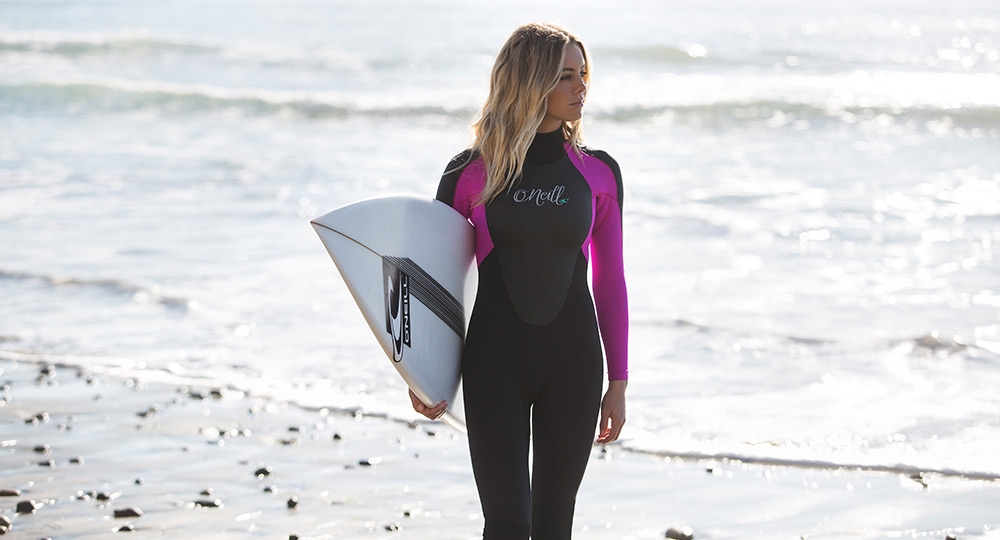Wet suits are a fantastic tool that enables swimmers and surfers to enjoy the water year-round. The first step to remaining warm, content, and prepared to concentrate on having fun is to think what thickness of wetsuit do I need for the area and activity that you will be undertaking. Thickness and temperature are the main factors to consider when selecting a wetsuit, so stay with us and we’ll walk you through the entire process and wetsuit guide so you can be sure you’re getting the finest wetsuit for you.
How Do Wetsuits Work?
People who wish to spend a lot of time in the water typically wear a wetsuit. Swimmers, divers, and surfers who swim in cold water frequently wear wetsuits. The swimmers are kept warm or protected by wet suits. Thus, the swimmers are able to prevent hypothermia, a condition in which the body temperature is dangerously low.
Neoprene, a type of rubber, is used to make neoprene wetsuits. Between the neoprene and the wearer’s skin, the suit retains a small layer of water. Because of this, the user is constantly wet—hence the name “wetsuit.” Body heat helps the wearer stay warm by warming the layer of retained water. If the wetsuit is too loose, the water’s surface will be too wide for the wearer to stay warm.
Wetsuit Thickness
Wetsuits come in a variety of styles and thicknesses to suit the needs of the wearer and the various types of water. Typically, a wetsuit’s thickness corresponds to how warm it keeps the wearer. However, it becomes more challenging to maneuver in a thicker wetsuit. The majority of wetsuits are 3 to 5 millimeters thick.
Based on the environment and water temperature at your local surf spot, choose the thickness of your wetsuit. A heavier suit is required for colder water, with more neoprene for insulation. The thicknesses of wetsuits with two or more numbers vary. The body’s core is covered in the thickest neoprene for warmth, while the arms and legs are covered in thinner neoprene for more paddling flexibility.
Even in snowy conditions, wearing booties, gloves, mittens, and a hood can provide all-day comfort. Your particular tastes and tolerance for cold should be taken into consideration when thinking how to choose wetsuit thickness for your needs. The weight reduction from the lighter suit won’t mean too much if you’re too cold and have numb feet and shivering.
The neoprene’s thickness is one of the most crucial factors when thinking about wetsuit warming. Wetsuit thickness is expressed as two or three integers separated by a slash and measured in millimeters. Neoprene’s thickness in the torso is indicated by the first number, its thickness in the extremities (or only the legs if a third number is present), and its thickness in the arms, if any, is indicated by the third number. Your torso is covered in the first number’s thicker neoprene to preserve your body’s core heat. Maintaining your core temperature is crucial for avoiding hypothermia. Your extremities are covered in the second and third layers of neoprene, which is thinner.
Guide to Wetsuit Thickness and Temperature
Always take into account your own level of cold tolerance. Those who run warmly, whilst others may require more neoprene to stay warm, may prefer thinner 3/2 wetsuits. The drawback of thicker neoprene is that it may need more effort to paddle and move around in the water.
| Water Temperature (F°) | Thickness of Wetsuit | Type of Wetsuit | Weather Considerations |
| Above 75 F° | none | Rashguard for sun protection | Consider wearing a jacket if there is a strong wind or if you are outside at dawn or night. |
| 65 F° – 75 F° | 0.5 – 2 mm | Spring Suit | Choose a long or short-sleeved neoprene jacket and board shorts depending on the wind. A conventional shortie is the way to go if there is a noticeable chill in the air. |
| 60 F° – 65 F° | 3 – 2 mm | Full Suit | To assist block those chilly breezes, look for a 3 2 wetsuit with rubber smooth panels on the back and breast. |
| 55 F° – 60 F° | 4 – 3 mm | Full Suit and Booties | Get out the heavier suit as the weather changes from brisk to cold. Grab a pair of booties if you want to go for longer periods; anything between 3mm and 5mm will work in these circumstances. |
| 50 F° – 55 F° | 5 – 4 mm | Full Suit +Booties +Gloves | Reserved for the winter and high latitudes. |
| 40 F° – 50 F° | 6 – 5 mm | Full Hooded Suit+ Booties +Mittens | These are often the thickest suits. For these situations, use extra thick booties and mittens in the 7mm range. |
The level of intensity at which you engage in activity is a crucial consideration. If you’re surfing hard, you don’t want to get a suit that is too thick, just like you wouldn’t go for a long run while wearing a down jacket. You may become overheated and fatigue more quickly if you do this. However, if you choose your waves more carefully, a heavier suit will keep you warm in between sets.
The Bottom Line
Whatever wetsuit thickness you choose, it’s crucial to choose the correct size and take care of it while wearing it. Our guide on finding the ideal fit and wetsuit maintenance will help you in choosing the correct one. No matter what the weather throws at you, that is the greatest approach to be warm and comfortable in the water.
